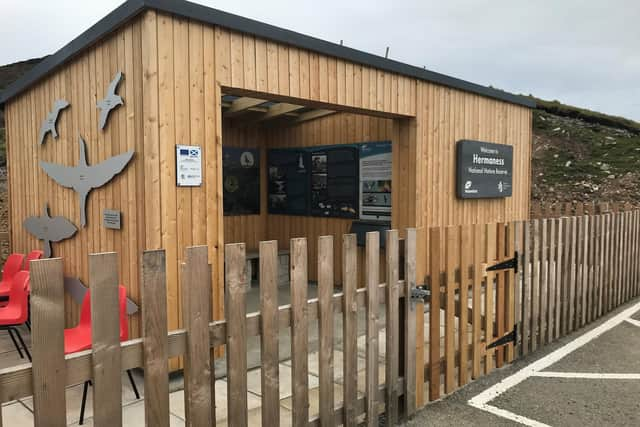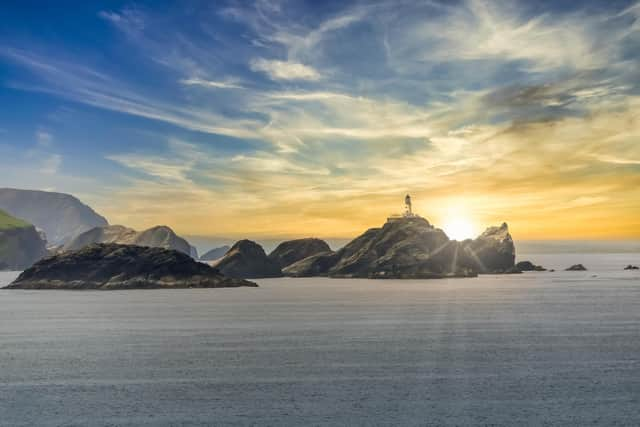Sustainable Scotland: Improvements at stunning nature reserve on UK and Scotland's most northerly inhabited island
Explorers can now enjoy more than a mile of new boardwalk as well as an information shelter and toilets at the Hermaness National Nature Reserve, on the rugged island of Unst, which is home to globally significant seabird colonies.
Retracing the original path to Muckle Flugga signalling station, on Hermaness Hill, the route creates a circular journey around the site.
Advertisement
Hide AdAdvertisement
Hide AdThe walkway, which has been routed to avoid disturbance to rare nesting birds, has been clad with wooden planks to protect fragile peatland from erosion.
The aim of the £900,000 project, delivered through a partnership of NatureScot, Shetland Islands Council and VisitScotland, is to enhance the visitor experience at Hermaness and help conserve the site.
“Hermaness is a truly special place, with spectacular cliffs that are home to internationally important populations of seabirds including puffins, great skuas and gannets,” said NatureScot chief executive Francesca Osowska.
“As Scotland’s nature agency, we aim to inspire many more people to discover and value our natural world.


“These fantastic new facilities will help locals and visitors alike connect to nature at Hermaness for generations to come, as well as protect the nature reserve and provide many benefits for Shetland communities.”
Steve Mathieson, VisitScotland’s development manager for Shetland, said: “The Hermaness project is a great example of an initiative that enhances the visitor experience and enables more people to access the incredible natural wonders of the UK’s most northerly nature reserve, whilst still helping to preserve the fragile ecosystem.”
North Isles councillor Ryan Thomson said: “This is great news for tourism in Shetland and in Unst particularly.
“Hermaness NNR is an outstanding natural visitor attraction that draws many folk to the isles every year.


Advertisement
Hide AdAdvertisement
Hide Ad“These upgraded facilities will improve the visitor experience and help to protect the natural environment for the future.”
The work has been funded by £580,704 from the Natural and Cultural Heritage Fund, £286,300 from the Rural Tourism Infrastructure Fund and £19,857 from NatureScot.
The nature reserve overlooks the tiny rocky island of Muckle Flugga, which is home to myriad seabirds and a lighthouse.
Originally called North Unst Lighthouse, the structure – designed and built by Thomas and David Stevenson, of the famous Stevenson lighthouse engineering dynasty – was erected in 1854 to protect ships during the Crimean War.
It was renamed Muckle Flugga Lighthouse in 1964,
Muckle Flugga was once the northernmost inhabited island in the UK, but forfeited that accolade to Unst when the lighthouse was automated in 1995 and the last residents moved out.
Comments
Want to join the conversation? Please or to comment on this article.
